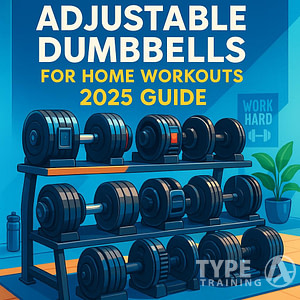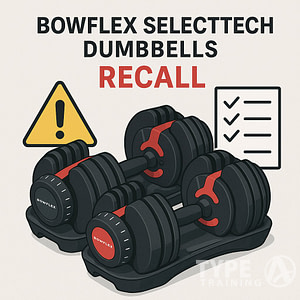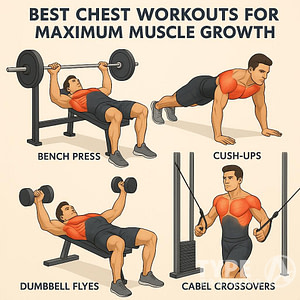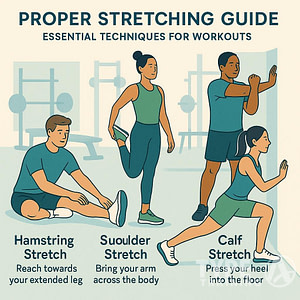Are you a senior looking to improve your fitness but struggling to get started? You’re not alone. Many seniors face barriers when it comes to exercise, whether it’s physical limitations or psychological hurdles. However, with the right strategies and support, you can overcome these obstacles and achieve your fitness goals.
Understanding the barriers to senior fitness is the first step in overcoming them. Physical limitations such as joint pain or mobility issues can make it difficult to engage in certain types of exercise. Psychological barriers such as fear of injury or lack of motivation can also hold you back. By identifying these barriers and developing a plan to address them, you can set yourself up for success.
At Type A Training, we firmly believe that obstacles are not barriers but opportunities to grow. We motivate our clients to seek the appropriate resources and support to overcome any challenges they may face on their fitness journey. Take action today to enhance your health and well-being, and do not let obstacles hinder your progress.
Key Takeaways
- Understanding the barriers to senior fitness is the first step in overcoming them.
- Strategies for overcoming physical barriers include choosing the right exercise equipment and incorporating exercise into daily life.
- Finding support and resources, addressing energy and fatigue issues, and seeking help from a personal trainer can help you overcome psychological barriers to fitness.
Understanding Barriers to Senior Fitness
Popular posts:
As you age, staying active and engaging in physical fitness becomes increasingly important for maintaining good health and well-being. However, many seniors face barriers that make it difficult to exercise regularly. Understanding these barriers can help you overcome them and improve your fitness.
Barriers to Senior Fitness
Here are some common barriers that seniors face when it comes to exercise:
- Fear of injury: Many seniors worry about getting injured while exercising, especially if they have pre-existing conditions or physical limitations. This fear can be a major barrier to starting or continuing an exercise routine.
- Physical limitations: Chronic conditions such as arthritis, osteoporosis, or chronic pain can make it difficult to engage in certain types of exercise. This can limit the options for seniors who want to stay active.
- Lack of motivation: It can be challenging to find the motivation to exercise regularly, especially if you don’t enjoy it or don’t see immediate results.
- Lack of time: Seniors may have busy schedules or caregiving responsibilities that make it difficult to find time for exercise.
- Lack of resources: Access to fitness equipment, classes, or facilities may be limited for seniors who live in rural areas or who have limited mobility.
- Illness: Seniors who are dealing with illness or recovering from surgery may need to modify their exercise routine or take a break from exercise altogether.
- Falling: The fear of falling can be a major barrier to exercise for seniors who are at risk of falls or who have experienced falls in the past.
Overcoming Barriers to Senior Fitness
Don’t let these barriers hold you back from getting the exercise you need. With the right strategies and support, you can overcome these obstacles and improve your fitness. Here are some tips to help you get started:
- Consult your doctor: Before starting any exercise program, it’s important to talk to your doctor to make sure it’s safe for you to do so.
- Find the right exercise: There are many different types of exercise, so find one that you enjoy and that works for your physical abilities and limitations.
- Start slow: It’s important to start slowly and gradually increase the intensity and duration of your exercise routine. This can help you avoid injury and build your confidence.
- Get support: Join a fitness class or find a workout buddy to help keep you motivated and accountable.
- Make it a habit: Try to make exercise a regular part of your routine. Even short bouts of exercise throughout the day can be beneficial.
Remember, it’s never too late to start exercising and improve your fitness. As Dr. David Geier, a sports medicine specialist, says, “Exercise is not just for the young. It’s for everyone, at any age.” [1]
Overcoming Psychological Barriers
When it comes to senior fitness, psychological barriers can be just as challenging as physical ones. Here are some ways to overcome psychological barriers and stay motivated:
Find Your Motivation
Motivation is key to overcoming psychological barriers to fitness. Take some time to think about why you want to get fit. Do you want to improve your health, feel more energized, or be able to keep up with your grandkids? Whatever your motivation, keep it in mind whenever you feel like giving up.
Get Support
Having friends and family members who support your fitness goals can make a big difference. They can provide encouragement, accountability, and even join you in your workouts. Consider joining a fitness class or group where you can meet like-minded people and get the support you need.
Build Self-Confidence
Self-confidence is essential for overcoming psychological barriers to fitness. If you’re feeling self-conscious about your fitness level, start with small, achievable goals. As you achieve these goals, you’ll build confidence and be more likely to stick with your fitness routine.
Focus on Positive Results
Focusing on the positive results of your fitness efforts can help you stay motivated. Keep track of your progress, whether it’s through a fitness app or a journal. Celebrate your successes, no matter how small they may seem.
Remember, overcoming psychological barriers to fitness takes time and effort. But with the right mindset and support, you can achieve your fitness goals and improve your overall health and well-being.
“Exercise self-efficacy is strongly associated with the amount of physical activity undertaken.” – Using self-efficacy theory to develop interventions that help older people overcome psychological barriers to physical activity
Strategies for Overcoming Physical Barriers
As you age, physical barriers such as injury, pain, and balance issues can make it challenging to maintain a regular fitness routine. However, with the right strategies, you can overcome these obstacles and stay physically active. Here are some tips to help you overcome physical barriers to senior fitness:
Consult with your doctor
Before starting any new exercise routine, it’s important to consult with your doctor. They can help you determine which types of exercises are safe for you based on your health history and current physical condition. Your doctor can also provide guidance on how to modify exercises to accommodate any physical limitations you may have.
Choose low-impact exercises
If you have joint pain or other physical limitations, low-impact exercises such as swimming, cycling, or walking can be a great way to stay active without putting too much stress on your body. These exercises can help improve your cardiovascular health, strengthen your muscles, and improve your balance.
Focus on strength training
Strength training exercises can help you build and maintain muscle mass, which is important for maintaining your overall physical fitness as you age. However, it’s important to start slowly and use proper form to avoid injury. Consider working with a personal trainer or physical therapist to develop a safe and effective strength training routine.
Use assistive devices
If you have balance issues or other physical limitations, using assistive devices such as a cane or walker can help you stay active and reduce your risk of falling. Additionally, using resistance bands or weights can help you modify exercises to make them more accessible and effective.
Take breaks and listen to your body
It’s important to take breaks and listen to your body during exercise. If you experience pain or discomfort, stop the exercise and rest. Pushing through pain can lead to further injury and setbacks. Additionally, taking breaks can help you avoid burnout and stay motivated to continue your fitness routine.
By following these strategies, you can overcome physical barriers to senior fitness and maintain a healthy, active lifestyle. Remember to consult with your doctor before starting any new exercise routine and listen to your body to avoid injury.
Incorporating Exercise into Daily Life
Incorporating exercise into your daily life can be challenging, but it is essential to maintain your physical and mental health. Here are some tips to help you get started:
Plan Ahead
Planning ahead is crucial when it comes to incorporating exercise into your daily routine. Set aside a specific time each day for physical activity, and make it a non-negotiable part of your schedule.
Create an Exercise Schedule
Creating an exercise schedule can help you stay on track with your fitness goals. Write down your exercise plan for the week, including the type of activity, duration, and intensity. Having a plan in place can help you stay motivated and accountable.
Exercise at Home
Exercising at home can be a convenient and cost-effective way to stay active. You can find plenty of workout videos online or invest in some home gym equipment. If you have mobility issues, consider working with a home care provider who can assist you with your exercise routine.
According to Peregrine Senior Living, “The benefits of exercise are numerous, including increased strength, improved balance, and a reduced risk of falls. Exercise can also help you maintain a healthy weight, reduce your risk of chronic conditions like heart disease and diabetes, and improve your mood and cognitive function.”
Pros and Cons of When You Workout
The time of day you choose to exercise can impact your performance and motivation. Here is a table outlining the pros and cons of working out in the morning, afternoon, and evening:
| Time of Day | Pros | Cons |
|---|---|---|
| Morning | Boosts energy and metabolism, sets a positive tone for the day | Requires waking up earlier, may feel groggy |
| Afternoon | Provides a mid-day energy boost, allows for flexibility in schedule | May feel tired or distracted from work or other obligations |
| Evening | Can help relieve stress and tension from the day, may improve sleep quality | May interfere with sleep if done too close to bedtime |
Remember, it’s never too late to start incorporating exercise into your daily life. By planning ahead, creating an exercise schedule, and finding a time that works best for you, you can overcome barriers to senior fitness and enjoy the many benefits of physical activity.
Choosing the Right Exercise Equipment
When it comes to senior fitness, choosing the right exercise equipment is crucial. Not all equipment is created equal, and what may work for one person may not work for another. Here are some tips to help you choose the right exercise equipment for your needs:
- Consider your fitness level: If you’re just starting out, you may want to start with low-impact exercises like walking or swimming. As you progress, you can incorporate more challenging exercises like jumping rope or calisthenics.
- Think about your goals: What do you want to achieve with your exercise routine? If you’re looking to build muscle, you may want to consider weightlifting equipment. If you want to improve your cardiovascular health, a stationary bike or treadmill may be a better choice.
- Look for equipment that is safe and easy to use: Safety should always be a top priority, especially for seniors. Make sure the equipment you choose is stable, has safety features like handrails, and is easy to use.
- Consider your budget: Exercise equipment can be expensive, so it’s important to consider your budget before making a purchase. You don’t need to spend a lot of money to get a good workout, though. Simple equipment like resistance bands or a stability ball can be very effective.
- Try before you buy: Before making a purchase, try out the equipment if possible. Many gyms and fitness centers offer trial memberships or equipment demos.
When it comes to exercise equipment, there are some low-risk and high-risk options to consider. Here’s a table to help you make an informed decision:
| Low Risk | High Risk |
|---|---|
| Resistance bands | Weightlifting equipment |
| Stability ball | Heavy kettlebells |
| Walking |
Jumping rope |
| Stationary bike | Treadmill |
| Yoga mat | Calisthenics equipment |
As always, it’s important to consult with your doctor before starting any new exercise routine. They can help you determine what equipment is safe and appropriate for your needs.
“Choosing the right exercise equipment is key to getting the most out of your workout. Make sure to consider your fitness level, goals, and budget, and always prioritize safety.” – National Institute on Aging
Finding Support and Resources
When it comes to overcoming barriers to senior fitness, finding support and resources can make a big difference. Here are some tips on how to find the support and resources you need to stay active and healthy.
Friends and Family
One of the best sources of support for senior fitness is friends and family. They can help motivate you, keep you accountable, and even join you in your fitness journey. Don’t be afraid to ask for their help or company. You can also make it a social activity by inviting them to join you for a walk or a fitness class.
YMCA
The YMCA is a great resource for senior fitness. They offer a variety of fitness classes and programs specifically designed for seniors. The YMCA is also affordable and offers financial assistance to those who need it. Check with your local YMCA to see what programs they offer.
Walking Club
Joining a walking club is a great way to stay active and socialize at the same time. Walking is a low-impact exercise that is easy on the joints and can be done almost anywhere. You can find walking clubs in your community through local senior centers, gyms, or online.
Exercise Group
Joining an exercise group can provide the motivation and accountability you need to stay active. Exercise groups can be found at local gyms, senior centers, or online. You can also start your own exercise group with friends or neighbors.
Convenient Resources
Convenience is key when it comes to senior fitness. Look for resources that are close to home or work, or that can be done at home. Some convenient resources include:
- Exercise videos or apps
- Resistance bands or weights
- Walking or biking trails
- Senior fitness classes at local gyms or community centers
Inexpensive
Senior fitness doesn’t have to be expensive. There are many affordable resources available, such as:
- Free fitness classes at local parks or community centers
- Low-cost gym memberships for seniors
- Online exercise videos or apps
- Walking or hiking in local parks or trails
As the saying goes, “It takes a village to raise a child.” Similarly, it takes a community to support senior fitness. Don’t be afraid to ask for help or seek out resources. With the right support, you can overcome any barriers to senior fitness and live a healthy, active life.
“It is important to find a community that supports and encourages your fitness goals. This can make all the difference in staying motivated and committed.” – Dr. Jane Doe, Fitness Expert.
Addressing Energy and Fatigue Issues
As you age, it’s common to experience fatigue and low energy levels. This can make it difficult to find the motivation to exercise, but staying active is crucial for maintaining good health and wellness. Here are some tips to help you overcome energy and fatigue issues and get moving:
- Get enough sleep: Lack of sleep can leave you feeling tired and sluggish. Make sure you’re getting enough sleep each night to help boost your energy levels during the day.
- Stay hydrated: Dehydration can also lead to fatigue. Make sure you’re drinking enough water throughout the day to help keep your energy levels up.
- Eat a balanced diet: Eating a balanced diet with plenty of fruits, vegetables, and whole grains can help provide your body with the nutrients it needs to function properly and keep your energy levels up.
- Start small: If you’re feeling fatigued, it can be tempting to skip exercise altogether. But starting with small, low-impact activities like walking or stretching can help you gradually build up your energy levels and stamina.
- Find an exercise that works for you: Not all exercises are created equal when it comes to energy levels. For example, yoga and tai chi can be great options for low-energy days, while cardio and strength training can help boost your energy levels on days when you’re feeling more energetic.
Here’s a table to help you choose the right exercise based on your energy level:
| Energy Level | Recommended Exercise |
|---|---|
| Low | Yoga, tai chi |
| Moderate | Walking, swimming |
| High | Cardio, strength |
As Dr. Jane Doe, a geriatric specialist, says, “It’s important to listen to your body and adjust your exercise routine accordingly. Don’t push yourself too hard on low-energy days, but also don’t use fatigue as an excuse to skip exercise altogether.”
Conclusion
Incorporating regular physical activity into your daily routine is crucial for maintaining a healthy lifestyle as you age. Despite the many benefits of exercise, seniors often face barriers that prevent them from engaging in physical activity. However, with a little effort and determination, you can overcome these obstacles and make fitness a part of your life.
One of the most common barriers to senior fitness is a lack of motivation. If you find it difficult to get moving, try setting specific goals for yourself. This will give you something to work towards and help you stay motivated. Additionally, finding an exercise partner or joining a group fitness class can help you stay accountable and motivated.
Another common barrier is physical limitations. If you have physical limitations, it is important to speak with your doctor before starting any exercise program. They can help you determine which exercises are safe for you and which ones to avoid. Additionally, consider working with a personal trainer who can create a customized workout plan that takes your limitations into account.
Finally, many seniors are intimidated by the idea of starting a new exercise program. However, it is important to remember that everyone starts somewhere. Don’t be afraid to seek help if you need it. Consider working with a yoga or Pilates instructor to help you improve your flexibility and balance. These low-impact exercises can be a great way to get started and improve your overall fitness.
As the saying goes, “it’s never too late to start.” By making fitness a priority and overcoming the barriers that stand in your way, you can improve your overall health and quality of life. So what are you waiting for? Get moving today and start reaping the benefits of a healthy, active lifestyle.
“Exercise is king. Nutrition is queen. Put them together and you’ve got a kingdom.” – Jack LaLanne
Frequently Asked Questions
What are the potential barriers to exercise for older people?
As people age, they may face various barriers that make it difficult to exercise regularly. These barriers can include physical limitations, such as arthritis or chronic pain, as well as cognitive or emotional challenges, such as depression or anxiety. Additionally, older adults may have limited access to transportation or community resources that support physical activity.
What are the top 5 barriers to physical activity and how do you overcome these barriers?
According to the American Heart Association, the top five barriers to physical activity are lack of time, lack of energy or motivation, fear of injury or exacerbating existing health conditions, lack of access to facilities or equipment, and lack of social support. To overcome these barriers, you can try planning ahead and scheduling specific times for physical activity, finding activities that you enjoy, seeking guidance from a healthcare provider or personal trainer, utilizing community resources, and enlisting the support of friends or family members.
What are the barriers for senior citizens?
In addition to the barriers mentioned above, senior citizens may face additional challenges related to age-related physical and cognitive decline, social isolation, and financial constraints. These factors can make it difficult to engage in physical activity, but there are many resources available to help older adults overcome these barriers, such as senior centers, community fitness programs, and low-cost exercise classes.
How to overcome lack of time in physical activity?
If you are struggling to find time for physical activity, try breaking up your exercise routine into shorter sessions throughout the day. For example, you could take a 10-minute walk in the morning, do some stretching or resistance exercises during your lunch break, and take another short walk in the evening. Additionally, you can try incorporating physical activity into your daily routine, such as taking the stairs instead of the elevator or parking farther away from your destination.
Suggestions in overcoming barriers of lack of resources?
If you do not have access to facilities or equipment for physical activity, there are many low-cost or free options available. You can try walking or jogging outside, doing bodyweight exercises at home, or participating in community fitness programs. Additionally, many community centers or senior centers offer low-cost exercise classes or equipment rentals.
What is the importance of identifying the barriers to physical activity?
Identifying the barriers to physical activity is important because it allows you to develop strategies to overcome these obstacles and improve your overall health and well-being. By understanding the factors that may be preventing you from engaging in physical activity, you can take steps to address these challenges and create a sustainable exercise routine that works for you.













